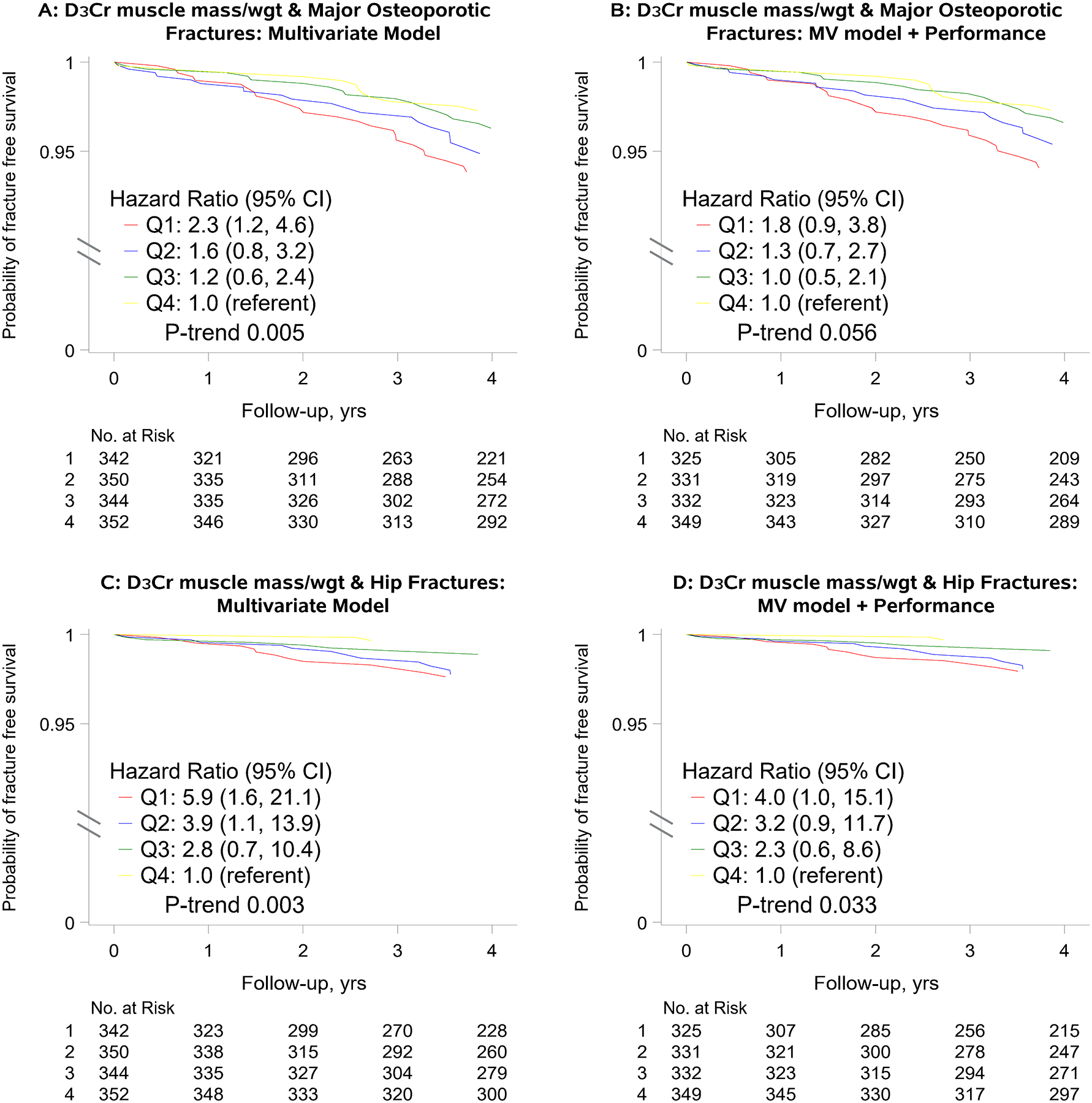Figure 4.

Multivariate* adjusted hazard ratio (HR) for major osteoporotic and hip fracture, by quartile of D3Cr muscle mass/wgt
*Panels A and C: Adjusted for age, history of falls, femoral neck BMD, and FRAX 10-year risk of hip fracture or major osteoporotic fracture
*Panels B and D: Adjusted for age, history of falls, femoral neck BMD, FRAX 10-year risk of hip fracture or major osteoporotic fracture, grip strength, walking speed and chair stand rate.
*Hazard ratios per SD decrement in D3Cr muscle mass/wgt in models adjusted for age, history of falls, femoral neck BMD and FRAX 10-year risk of hip fracture or major osteoporotic fracture were 1.75 (95%CI: 1.22, 2.50) for hip fracture and 1.37 (95%CI: 1.08, 1.74) for major osteoporotic fracture.
*Hazard ratios per SD decrement in D3Cr muscle mass/wgt in models adjusted for age, history of falls, femoral neck BMD and FRAX 10-year risk of hip fracture or major osteoporotic fracture, grip strength, walking speed and chair stand rate were 1.44 (95%CI: 0.98, 2.10) for hip fracture and 1.23 (95%CI: 0.94, 1.59) for major osteoporotic fracture.
D3Cr muscle mass/wgt quartiles were defined as follows: quartile 1 (lowest): <0.273 (median 0.25); quartile 2: ≥0.273 – <0.303 (median: 0.289); quartile 3: ≥0.303 – <0.339 (median: 0.319), quartile 4 (highest): ≥0.339 (median: 0.363).
